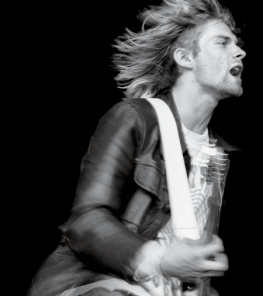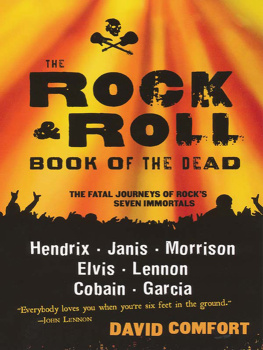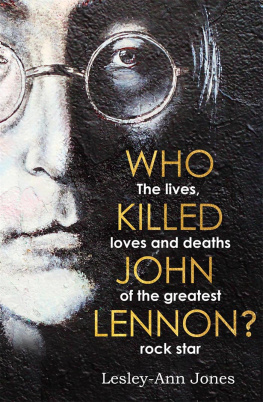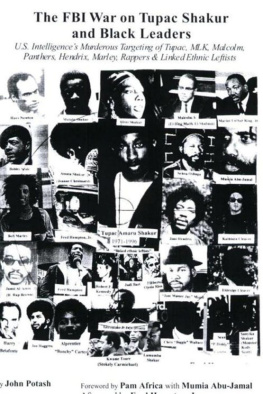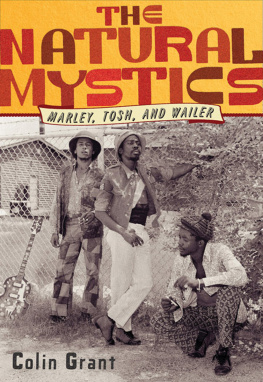THE COVERT WAR
AGAINST ROCK
THE COVERT WAR
AGAINST ROCK
WHAT YOU DONT KNOW ABOUT THE DEATHS OF
JIM MORRISON
TUPAC SHAKUR
MICHAEL HUTCHENCE
BRIAN JONES
JIMI HENDRIX
PHIL OCHS
BOB MARLEY
PETER TOSH
JOHN LENNON
THE NOTORIOUS B.I.G.
ALEX CONSTANTINE
FERAL HOUSE
The Covert War Against Rock 2000 by Alex Constantine
All rights reserved.
eISBN 978-1-936239-50-4
Feral House
1240 W. Sims Way Suite 124
Port Townsend, WA. 98368
Design by Linda Hayashi
10 9 8 7 6 5 4 3 2 1
For the victims of
Operation CHAOS and COINTELPRO
COVERT CONTENTS
ASSASSINATION POLITICS OF THE VIETNAM WAR PERIOD: FASCISM, AMERICAN-STYLE AND THE RISE OF RICHARD NIXON
A [KILLING] FIELD DAY FOR THE HEAT
TIME MACHINE: THE BIRTH OF TOP 40 RADIO AND ALAN FREEDS NEAR-DEATH EXPERIENCE (EARLY CIA AND MOB INFLUENCES ON THE ROCK MUSIC INDUSTRY)
PARAPOLITICAL STARS IN THE DOPE SHOW
THE DEATH OF CASS ELLIOT AND OTHER RESTLESS YOUTH
A MURDER IN THE HOUSE OF POOH: BRIAN JONES
PORTRAITS IN CARNAGE:
THE END OF THE ROCK FESTIVALS
I DONT LIVE TODAY:
THE JIMI HENDRIX POLITICAL HARASSMENT, KIDNAP AND MURDER EXPERIENCE
WHEN YOURE A STRANGER:
FRAGRANCE D CHAOS INVESTIGATIVE
FINDINGS ON THE DEATH OF JIM MORRISON
LIKE COFFINS IN A CAGE: THE BAEZ CONTRAS AND THE DEATH OF PHIL OCHS
WHO KILLED THE KENNEDYS? (AND SAL MINEO?)
PROJECT WALRUS AND HOLDEN CAULFIELDS WARM GUN
WHATCHA GONNA DO?...
THE DEATHS OF BOB MARLEY AND PETER TOSH
GANG WAR: SONS OF CHAOS VS. THUGS A TUPAC SHAKUR AND NOTORIOUS B.I.G. ASSASSINATION DIGEST
DANCING ON THE JETTY:
THE DEATH OF MICHAEL HUTCHENCE, ET AL
ACKNOWLEDGEMENTS
Operation CHAOS a draft outline found among the papers of late political researcher Mae Brussell, provided the framework and inspiration for this study. The decision to write it was made ten years ago, and since that time the author has gathered pertinent material toward this end, often at the suggestion of friends who had a piece of the puzzle to contribute, including Will Robinson, Marilyn Colman and the Brussell Sprouts, David X, Patrick Fourmy, publisher of Prevailing Winds, Al Marcelliene, John Judge, Lee Lew-Lee, Cynthia Ford, Lynn Moss-Sharman, Adam Parfrey, Bennett Theissen, Matty, DasGoat, Virginia McCullough, Dick Farley, Cynthia Richards, the late Sharon White, Andrew and David, MIHRA, Linda Minor and CTRLs researchers, Vicky Flores-Guerra, Michael Putini, S.M., Melissa Darpino and the patient librarians at UCLAs Research Library and Los Angeles municipal library system. The author also wishes to thank Elliot Mintz, spokesman for Bob Dylan and Yoko Ono, reggae archivist Roger Steffans and Realist editor Paul Krassner for the admirable roles they have played in opposing some of the ignoble acts described in this volume.
FOREWORD
The corporate media harbors hundreds of CIA propagandists and fawning loyalists who find revelations concerning domestic political assassinations inconvenient and stroll by with little comment. The central revelation of this volume is the fact that the Agency and Organized Crime have, for over over thirty years, engaged in a program to silence popular musicians whose influence subverts the cynical thought control tactics of American government and media. There exists within both worlds a rigidly conservative infrastructure that has little regard for human rights. This infrastructure has contributed to the rise of every fascist regime in the Third World. It has overthrown many a democratically-elected leader and favors death squad rule. It thrives on war, propaganda and social control. It takes a dim view of critics in the music industry, particularly young communards who advocate demilitarization, dread-locked musicians standing up for their rights, or street Thugs who condemn police violence and suggest shooting back.
The untimely deaths of John Lennon, Bob Marley, Tupac Shakur, and other rock musicians who lashed out at the established order were followed by widespread suspicion of foul play. The murder of Lennon led Fenton Bressler, an English barrister, to descend reluctantly into the hidden labyrinth of CIA mind control operations, and the result of his investigation, Who Killed John Lennon? (1989), raised provocative questions regarding the deep history of Mark David Chapman But Bressler was an exception. Hard questions concerning the deaths of most musicians in this book have never been asked. On the contrary, many reporters and biographers are inclined to dismiss, with varying degrees of condescension, evidence of murder as grist for exotic conspiracy theories (though these, of course, do tend to run rampant when fascism, which is inherently conspiratorial, dominates the intelligence community). This unwillingness to dissect covert operations renders reporters with integrity incapable of evaluating the evidence and arriving at an objective judgment. An attempt is made here to correct this imbalance, to treat the evidence with the seriousness it deserves.
A sobering example: ten years ago, the statement that Brian Jones, founding member of the Rolling Stones, was murdered would have been met with ridicule. Everyone knew that Jones died in 1969 by accidental drowning. The rational view held that Jones was a fiercely talented but precocious, drug-crazed rogue with an irrepressible death wish. But the subsequent confession of his killer, and the testimony of several witnesses intimidated into silence, has since dispelled the status quo belief (though the press remains largely indifferent). Brian Jones was murdered. Journalists should take care not to let it happen again, but this is not a profession that readily learns from its mistakes. Reporters will transcribe the official verdict on the next accidental drowning, pride themselves on their objectivity for refusing to be lured by bothersome details into contradicting the official record. A politically indifferent public will accept all this and the hypocritical distortions of the propagandists.
Anyone with a penchant to research the subject is advised that there are patterns to look for to distinguish a political hit from the apolitical variety and accidental or natural causes. Nearly all celebrity subjects of this volume knew extreme paranoia before their deaths. John Lennon and Jim Morrison were both driven to desperation by constant FBI harassment. Jones was made a nervous wreck by police raids and the intimidations of a circle of killers who infiltrated his household. Jimi Hendrix feared Michael Jeffrey, his manager, a self-avowed intelligence agent with Mafia ties, who stole from him, then arranged for his kidnapping and probable murder. Bob Marley received a death threat from the CIA, and sang about his War with the Agency. Tupac Shakur lived in defiance of a COINTELPRO-type operation waged, he realized, to destroy his career and silence him.
Another recurring theme is the posthumous publication of books libelling the deceased and misleading the reader on the circumstances of death. Bob Woodward, Danny Sugarman and the late Albert Goldman worked this genre and profited handsomely from it. In the mainstream media, discrediting tactics are also common, and the death is almost always blamed on the victim. Cass Elliott, according to one fraudulent medical expert and a flurry of erroneous press reports, was claimed by gluttony. Jones was a victim of vague misadventure, and drugs were said to have contributeddespite the fact that he had been off them for a month before he died. It was widely reported falsely that Jimi Hendrix overdosed on heroin, and it is universally held that he choked on his own vomit, though the true circumstances are complex and have driven many of his friends to demand an investigation. Michael Hutchence was supposedly done in by auto-erotic sex, but a broken hand, split lip and contusions on his body have not been explained. In each case, cruel exaggeration and blatant falsehood parade as fact.
Next page


